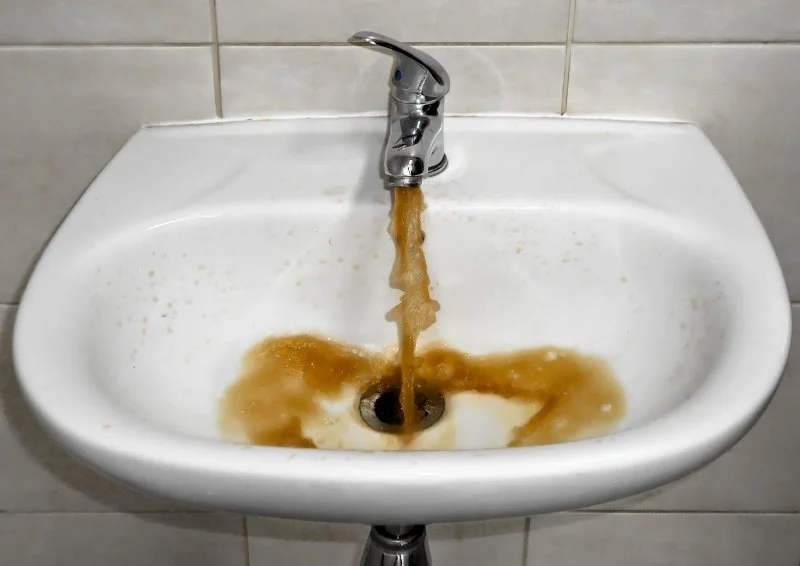
- 1 - Understanding Discolored Water
- 2 - Common Causes of Discolored Water
- 3 - When to Worry About Discolored Water
- 4 - How to Fix Discolored Water
- 5 - Prevention and Maintenance Tips to Avoid Discolored Water
1. Understanding Discolored Water
Discolored water is a common plumbing issue that many homeowners encounter at some point. Water that is cloudy, brown, yellow, or rusty in appearance can indicate an underlying problem in your water system. While discolored water is often harmless, it’s essential to determine the cause, as it can affect both the safety and appearance of your water.
In many cases, discolored water is caused by the presence of sediment, minerals, or rust in the water supply. While this issue may seem like a minor inconvenience, it’s important to assess whether the discoloration is temporary or indicative of a more significant plumbing issue. Understanding the causes of discolored water can help you make informed decisions about how to handle the situation.
2. Common Causes of Discolored Water
There are several reasons why your water might appear discolored. Let’s take a look at some of the most common causes:
- 1. Rusty Pipes: One of the most common causes of brown or reddish water is rust in the water pipes. Older homes with galvanized steel pipes are particularly prone to rust buildup, which can contaminate the water supply. When water flows through corroded pipes, it can pick up iron particles, leading to discolored water.
- 2. Sediment Buildup: Over time, sediment can accumulate in the water supply, especially in areas with hard water. This can cause the water to appear cloudy or yellowish. The sediment often consists of minerals like calcium, magnesium, and iron, which can be harmless but unsightly.
- 3. Water Main Breaks or Repairs: When a water main breaks or undergoes repairs, it can stir up sediment and rust from the pipes. This can lead to discolored water in your home for a short period of time until the water settles and returns to normal.
- 4. High Mineral Content: Hard water, which contains high levels of minerals like calcium and magnesium, can cause a cloudy or milky appearance in your water. While this type of discoloration is usually harmless, it can affect the taste and appearance of your water.
- 5. Plumbing Work or Renovations: If your neighborhood is undergoing plumbing work or renovations, the disturbance can cause temporary discolored water. This is usually due to the disruption of the water flow and the movement of debris through the pipes.
3. When to Worry About Discolored Water
While some discolored water issues are temporary and harmless, there are certain circumstances when you should be concerned. Here are a few signs that you should worry about discolored water:
- 1. Persistent Discoloration: If the discolored water persists for an extended period, it could indicate a more serious issue with your plumbing or water supply. Rusty or contaminated water that does not clear up within a few hours or a day may need professional attention.
- 2. Health Concerns: If the water has a foul odor or tastes bad, it could be a sign of bacterial contamination or the presence of harmful chemicals. Water that is visibly discolored and has a strange smell should be tested for safety before use.
- 3. Damage to Plumbing: If you notice signs of rust or corrosion on your pipes, faucets, or appliances, it’s a good idea to have your plumbing inspected. Corroded pipes can lead to significant water damage and further complications if left untreated.
- 4. Water Main Issues: If there is a water main break or major repairs in your area, discolored water may be a temporary issue. However, if the water does not clear up after a few hours or the repair work is completed, it’s important to contact the water utility company or a plumber for assistance.
4. How to Fix Discolored Water
If you’re experiencing discolored water in your home, there are several steps you can take to resolve the issue. The solution depends on the underlying cause of the discoloration:
- 1. Flush the System: If the discoloration is caused by sediment buildup or rust, flushing the water pipes can help clear out the debris. Turn on all of the cold-water taps in your home and let them run for 10–15 minutes to flush out any particles that may be causing the discoloration.
- 2. Install a Water Filtration System: If you have hard water or are dealing with mineral buildup, installing a whole-house water filtration system or a water softener can help remove excess minerals and improve the quality of your water.
- 3. Replace Corroded Pipes: If rusty pipes are the culprit, you may need to replace sections of your plumbing. In older homes with galvanized steel pipes, this is a common solution to prevent further water discoloration and to maintain water quality.
- 4. Contact the Water Utility: If the discolored water is due to a water main issue, reach out to your local water utility company. They may be able to provide an update on the situation and offer guidance on how to address the problem.
5. Prevention and Maintenance Tips to Avoid Discolored Water
To avoid discolored water in the future, it’s important to practice regular maintenance and take preventive measures. Here are a few tips to keep your water clean and clear:
- 1. Regular Pipe Inspections: Have your plumbing inspected regularly by a professional plumber to identify any signs of corrosion, leaks, or damage. Early detection can prevent larger issues that may lead to discolored water.
- 2. Use a Water Softener: Installing a water softener can reduce the mineral content in hard water, preventing cloudiness or discoloration caused by mineral buildup.
- 3. Flush Your System Periodically: Flush your plumbing system once or twice a year to clear out sediment or debris that can cause blockages or discoloration in your water.
- 4. Avoid Pouring Grease Down the Drain: Avoid pouring grease or fatty substances down the drain, as they can cause clogs and contribute to discolored water over time.
Discolored water can be caused by various factors, but with proper care and attention, most issues can be resolved quickly. If you continue to experience problems with discolored water or need expert help, contact a professional plumber. For high-quality plumbing products and expert advice, visit Plumbers Supply Hub to find the best solutions for your home.








 Losekamp Plumbing LLC0.0 (0 reviews)
Losekamp Plumbing LLC0.0 (0 reviews) A & J Plumbing5.0 (6 reviews)
A & J Plumbing5.0 (6 reviews) Chavez Plumbing & Rooter Inc4.0 (163 reviews)
Chavez Plumbing & Rooter Inc4.0 (163 reviews) Parzival Plumbing4.0 (990 reviews)
Parzival Plumbing4.0 (990 reviews) Apple Valley Plumbing Company4.0 (38 reviews)
Apple Valley Plumbing Company4.0 (38 reviews) Tom Sondergeld Plumbing4.0 (51 reviews)
Tom Sondergeld Plumbing4.0 (51 reviews)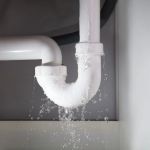 How to Fix a Sink That Rattles When Water Runs: Troubleshooting Guide
How to Fix a Sink That Rattles When Water Runs: Troubleshooting Guide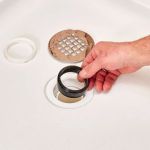 How to Replace a Floor Drain Strainer: A Step-by-Step Guide
How to Replace a Floor Drain Strainer: A Step-by-Step Guide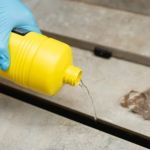 When to Use Chemical Drain Cleaners with Caution: Risks and Safe Alternatives
When to Use Chemical Drain Cleaners with Caution: Risks and Safe Alternatives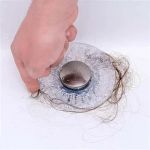 How to Replace a Tub Drain With Hair Trap Feature
How to Replace a Tub Drain With Hair Trap Feature How to Replace a Spigot That Leaks Only When Turned On
How to Replace a Spigot That Leaks Only When Turned On The Complete Guide to Replacing a Kitchen Sink Drain
The Complete Guide to Replacing a Kitchen Sink Drain